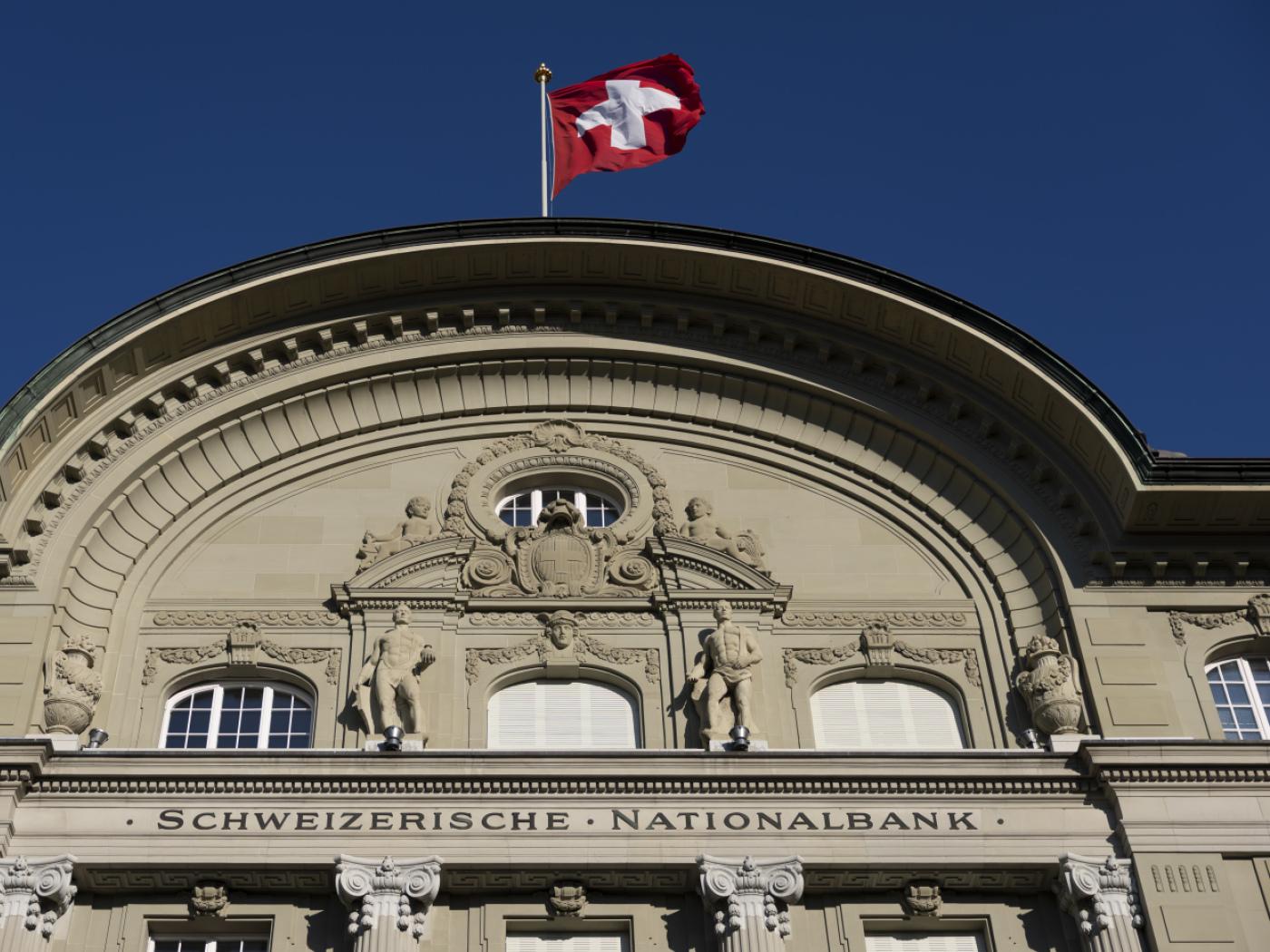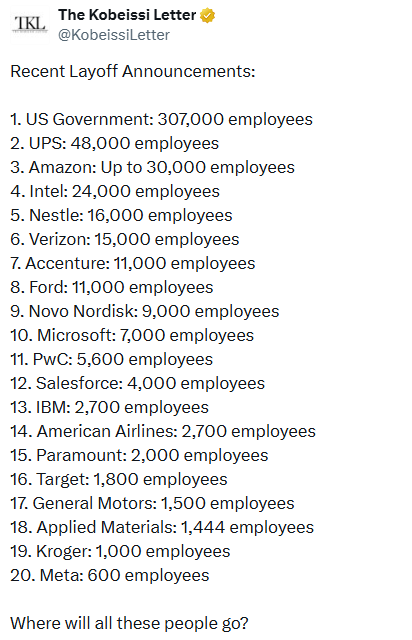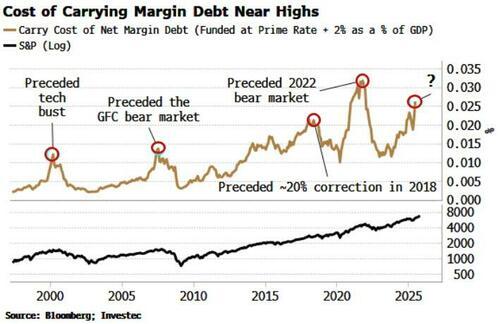 After falling in July and August, the US dollar strengthened against most of the major currencies in September. The dramatic pullback in equities seemed to have undergirded the yen’s resilience, which gained a net 0.25% against the dollar. However, the dollar’s broadly firmer tone appears corrective and consolidative in nature and coincided with the downturn in equities, especially high flying US tech shares. Risk assets, in general, succumbed to profit-taking amid increased tensions between the US and China on the one hand, and China and Taiwan on the other. The JP Morgan Emerging Market Currency Index fell by about 2.25%, the largest monthly decline since March’s 8.4% drop.
After falling in July and August, the US dollar strengthened against most of the major currencies in September. The dramatic pullback in equities seemed to have undergirded the yen’s resilience, which gained a net 0.25% against the dollar. However, the dollar’s broadly firmer tone appears corrective and consolidative in nature and coincided with the downturn in equities, especially high flying US tech shares. Risk assets, in general, succumbed to profit-taking amid increased tensions between the US and China on the one hand, and China and Taiwan on the other. The JP Morgan Emerging Market Currency Index fell by about 2.25%, the largest monthly decline since March’s 8.4% drop.
There is a resurgence of the virus in several parts of Europe, including the UK, the US, and Canada. This poses new political and economic challenges. Optimism that an effective and safe vaccine can be developed, even if not immediately, continues to run high. Pfizer and BioNTech could have interim analysis available about their vaccines in the coming weeks.
Some argue the dollar’s rebound was initially spurred by comments from the ECB’s Chief Economist Lane. Still, the move accelerated after the Federal Reserve made it clear that it was not going to take fresh measures to implement its new average inflation target. Its own economic projections do not show it near its targets for at least three years, and still, the FOMC did not move. In essence, the Fed underscored its commitment not to raise interest rates any time soon. Breaking more formally from the Phillip’s Curve, the Fed indicated that the trigger for the move would not simply be low unemployment. On the other hand, it’s not clear what would motivate the Fed to step-up its efforts.
Just as the high-income economies began recovering before the end of Q2, the economic momentum stalled before the end of Q3. This was becoming apparent before the latest surge of Covid cases and renewed measures that will have an adverse economic impact. Supportive policies will be extended. The UK has already announced a new jobs program to replace the furloughs, which expire at the end of October. If the former program replaced income for those who could not go to work, the new program supports those who are forced by circumstance to work fewer hours. Canada and France have also unveiled new fiscal efforts. New US spending also seems likely even if after the election.
The mid-October EU summit could very well signal the start of a new phase of the UK-EU relations. UK Prime Minister Johnson has threatened to walk away from the trade talks if no agreement was reached before the summit. An agreement by the summit has been seen as sufficient by Brussels to allow time for the ratification process. Even under the best circumstances, disruptions would inevitable, and these are not the best of circumstances. The Bank of England is poised to start the new round of accommodation when the Monetary Policy Committee meets on November 5, the same day as the next FOMC meeting.
The Chinese domestic economy continues to recover, and its trade surplus is growing. Beijing has accepted a stronger yuan. Since late May, the yuan has risen by about 5.25% against the dollar, a little behind the euro’s nearly 6% move. Indeed, the Q3 gain over 3.6% is the strongest quarterly performance in more than a decade. The US extended sanctions to China’s big semiconductor manufacturer SMIC. The sanctions not only apply to US company sales but to foreign producers using US-made equipment. China is woefully behind in quantitative commitments to the Phase 1 trade deal, but it has continued to reduce market restriction for foreign institutional investors. FTSE-Russell recognizes this and will begin including Chinese bonds in its indices next year, illustrating the ongoing integration of China in the capital markets even if its behavior in the goods market causes frictions.
We see little sign of that the US presidential election impact in the foreign exchange market. Three-month implied volatility edged higher September, but it seemed to more a function of counter-trend dollar recovery than anxiety about the election in general. The policy mix over the next couple of years is likely to be broadly similar, in the sense that the US will be running a large budget and current account deficit while the Federal Reserve indicated that it does not intend on raising rates before the end of 2023. This is not to suggest that there are no differences or that the differences are immaterial, but rather the macro forces that drive the $6.6 trillion a day market is probably dependent on who occupies the White House.
Dollar: The US dollar rose against nearly all the major currencies in September. The yen was the notable exception. There is a fundamental narrative that links the dollar’s recovery to the apparent heightened concern by some ECB officials and the clear signal by the Federal Reserve that while it can do more if needed, it is no hurry to do so now. It is relying on what Chair Powell has called “powerful” forward guidance that is will accept an overshoot of the 2% target. Yet, we suspect the dollar’s recovery in September was more of a technical correction than a true reversal of the trend. Moreover, we suspect that correction is over or nearly so at the start of Q4. Electoral rhetoric will heat up ahead of the November election. It does not appear to be impacting the $6.6 trillion a day foreign exchange market, but it could be contributing to the rise in implied volatility. We are not convinced that the election will change the underlying trend in the dollar, which we think is lower. At the risk of over-simplifying, given the current account deficit, a higher interest rate premium is needed to attract sufficient savings at current prices. The US economy and inflation outlook do not justify higher interest rates. The net result is likely a weaker dollar.
Euro: The euro’s rally from the March 23 low (~$1.0635) stalled on September 1 after poking a little above $1.20. The subsequent pullback to almost $1.16 coincided with some jawboning by ECB officials and a broader dollar rally, sparked in part by the signal from the Fed the bar to new measures has not been reached despite its adoption of an average inflation target. Inflation has been trending lower since late 2018, but Covid-related distortions and this year’s decline in energy prices helped drive headline CPI back below zero for the first time in four years. While this may overstate the case, it may be sticky, and the ECB warns that an improvement may be several months away. Its inflation forecast for 2021 current stands at 1%. Although the ECB meets at the end of October, the second wave of the contagion and the low inflation (core rate ~0.4%) are underpinning expectations that it will expand and extend is Pandemic Emergency Purchase Program at its December meeting, under the cover of new staff forecasts.
(end of September indicative prices, previous in parentheses)
Spot: $1.1720 ($1.1935)
Median Bloomberg One-month Forecast $1.1785 ($1.1905)
One-month forward $1.1735 ($1.1945) One-month implied vol 6.5% (7.9%)
Yen: Former Cabinet Secretary Suga succeeded Abe head of the Liberal Democrat Party and the Prime Minister. Key appointments in the cabinet were retained. There is a great sense of continuity. Not only does the new prime minister enjoy a bump in public support, but it also has an economy that is on the mend after three consecutive quarterly contractions. Ideas that Suga, who is enjoying a honeymoon in public opinion, would seek early elections have begun fading. The Diet’s session ends in October 2021. The world’s third-largest economy is forecast to have grown by about 15% in Q3. Amid a sharp sell-off in US equities when Tokyo markets were closed for a holiday in late September saw the dollar slump to JPY104, a marginal new six-month low. It rebounded quickly, but it was unlikely intervention. For the past three years, the dollar has spent little time below JPY105. There is perceived value there. The BOJ meets at the end of October and seems willing to look through the recent dip back into deflation driven by government-sponsored discounts to encourage tourism.
Spot: JPY105.50 (JPY105.90)
Median Bloomberg One-month Forecast JPY105.70 (JPY105.95)
One-month forward JPY105.60 (JPY105.90) One-month implied vol 5.7% (7.4%)
Sterling: At record-levels at the end of Q3, the virus is the most immediate threat to the UK. However, trade negotiations with the EU are not going well, and the risk is that a deal is not at hand for the October 15-16 summit. Several recent reports have noted many truckers and check-points for animal and plant products are not prepared for new rules and regulations. The issue is the extent and duration of the disruption at the start of the new year. Between these two shocks, the Bank of England is likely to ease policy at its next meeting in early November. Extending its bond purchases seems the most likely step, but there is scope to cut the base rate to zero from 10 bp. The market does not appear to have a negative rate discounted until Q2 21. Sterling’s three-month rally that took it to nearly $1.35 at the start of September ended abruptly, and it proceeded to fall 7.5-cents before stabilizing at the end of the month. The broad dollar direction appears to be the key driver.
Spot: $1.2920 ($1.3370)
Median Bloomberg One-month Forecast $1.2950 ($1.3285)
One-month forward $1.2930 ($1.3370) One-month implied vol 10.7% (8.7%)
Canadian Dollar: The US dollar’s eight-week slide against the Canadian dollar culminated with a bride dip below CAD1.30. Satiated risk appetites and the broad-based recovery saw the greenback trade above CAD1.34 by late in September. Prime Minister Trudeau’s expansionary budget includes income supports and national daycare appear secure the support of the New Democrat Party and keep the minority government intact. The Bank of Canada can buy more bonds if necessary but seems unlikely at the next meeting on October 28. Canada’s 2-year yield of around 25 bp is twice as high as the comparable US yield. Other G7 yields are negative. The Canadian economy is gradual and uneven recovery appears to be led by manufacturing and housing.
Spot: CAD1.3320 (CAD 1.3045)
Median Bloomberg One-month Forecast CAD1.3275 (CAD1.3100)
One-month forward CAD1.3325 (CAD1.3000) One-month implied vol 6.2% (6.5%)
Australian Dollar: After rallying to two-year highs at the start of September, a little above $0.7400, the Australian dollar trended lower and snapped a five-month advance. The macro driver was the appetite for risk assets and the US dollar’s broad recovery. Australia reported unexpectedly strong growth in the August jobs report (111k in August while economists projected a loss), which included a fall in the unemployment rate to 6.8% from 7.5% accompanied by a rise in the participation rate. Nevertheless, the risk is that the work of the Reserve Bank of Australia is not complete. It boosted its Term Funding Facility in August and still sees several arrows in its quiver. The most likely seems to be reducing the cash from rate from its current 25 bp level, extending yield curve control to the five-year rate from three, and buying more bonds.
Spot: $0.7160 ($0.7375)
Median Bloomberg One-Month Forecast $0.7175 ($0.7030)
One-month forward $0.7165 ($0.7380) One-month implied vol 10.0% (9.8%)
Mexican Peso: Mexico’s relatively high nominal and real interest rates, while investors were willing to take on some risk, helped drive the peso to its strongest level in six months in the middle of September. The compression in domestic demand and its role in international supply chains saw Mexico report record trade surplus in June and July (a combined surplus fo $11.5 bln compared with $1.3 bln in June/July 2019) and worker remittances remain strong. The central bank cut the target rate by 25 bp, the 11th cut since August 2019, to 4.25%. The previous five moves were 50 bp, which underscores the perception that the easing cycle is nearing an end. That said, Banxico’s willingness to cut rates while inflation was above its 2%-4% target range leaves the door open to another cut before the end of the year, given the weak economic conditions.
Spot: MXN22.11 (MXN21.89)
Median Bloomberg One-Month Forecast MXN22.07 (MXN21.92)
One-month forward MXN22.19 (MXN21.96) One-month implied vol 18.2% (13.4%)
Chinese Yuan: September was the fourth consecutive month that the dollar fell by more than one percent against the yuan. While its current account surplus, high rates, and its inclusion on stock and bond market indices would typically be associated with upward pressure on exchange rates, the fact that Beijing is accepting it is noteworthy. It can only be because it serves its interest. Recognizing the current geopolitical tensions and the risk of further deterioration, China appears to be boosting its strategic inventories of raw materials. Under the Phase 1 trade agreement, it must step up its imports of US goods, and a strengthening renminbi greases the skids. The yuan reached levels not seen in 16 months. There are limits to official tolerance, and signaling in part through the fix, suggests a period of consolidation may be desirable. The economic recovery appears to be continuing and broadening, helped by rising exports. Cross-strait tensions have escalated. Although the US does not have a defense pact with Taiwan and has had a one-China policy for 40 years, there is some strategic ambiguity.
Spot: CNY6.7900 (CNY6.8485)
Median Bloomberg One-month Forecast CNY6.8125 (CNY6.8815)
One-month forward CNY6.7935 (CNY6.9050) One-month implied vol 5.9% (4.9%)
Full story here Are you the author? Previous post See more for Next postTags: #USD,central-banks,Currency Movement,Featured,newsletter,policy mix
































